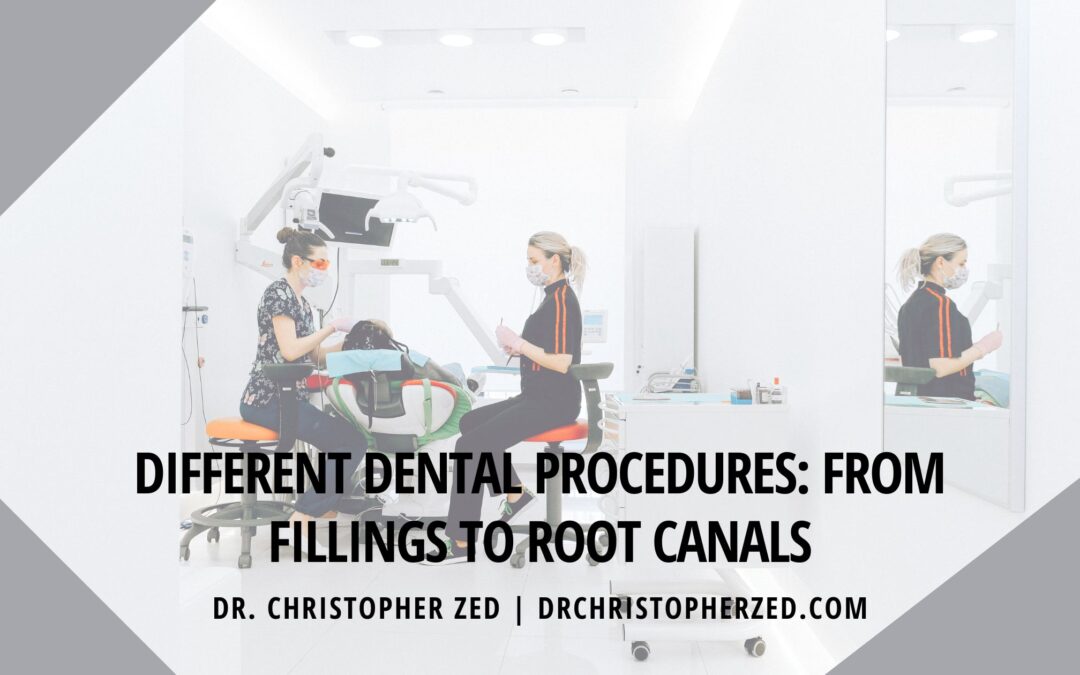A smile is often the first thing people notice about you, and maintaining good oral health is crucial for appearance and overall well-being. Dental procedures encompass various treatments, from routine check-ups to complex interventions like root canals.
1. Dental Fillings:
Dental fillings treat cavities or decay in teeth. Bacteria eating away at the enamel creates small holes or cavities. Dentists remove the decayed portion and fill the area with various materials, such as amalgam (silver), composite resin (tooth-colored), or gold. This not only prevents further decay but also restores the tooth’s functionality.
Composite resin fillings are increasingly popular due to their aesthetic appeal. They blend seamlessly with natural teeth, making them virtually unnoticeable. Additionally, composite resin fillings require less tooth removal than amalgam fillings, preserving a more natural tooth structure.
2. Dental Crowns:
Dental crowns, or caps, protect and restore a damaged or weakened tooth. They are often employed after root canals or when a tooth has a large cavity that cannot be repaired with a simple filling. Crowns can be used in cosmetics, such as covering misshapen or discolored teeth.
The process involves reducing the tooth’s size to accommodate the crown, taking impressions, and placing a temporary crown until the permanent one is ready. Crowns can be made from various materials, including porcelain, metal, or both. Porcelain crowns closely resemble natural teeth, making them a popular choice for front teeth. Metal crowns, typically made from gold or silver, are incredibly durable and suited for molars.
3. Root Canals:
A root canal is the preferred option for saving a severely infected or damaged tooth from extraction. The inside of a tooth, including the pulp and nerves, can become infected or inflamed due to deep decay, a crack or chip, or multiple dental procedures on the same tooth. Root canals are often viewed with apprehension but are essential for relieving pain and preventing further complications.
During a root canal, the dentist extracts the infected or inflamed pulp, thoroughly cleans and disinfects the inside of the tooth, and then fills and seals it. A crown is usually placed on top of the treated tooth to restore strength and function. Contrary to popular belief, root canals are relatively painless, thanks to modern anesthesia and techniques.
4. Teeth Whitening:
Teeth whitening is cosmetic and has gained immense popularity recently. It’s a simple and non-invasive way to enhance the look of your smile by brightening the color of your teeth. There are two prominent types of tooth whitening: in-office and at-home.
In-office teeth whitening involves a dentist applying a high-concentration whitening gel to your teeth and activating it with a special light. This process typically takes about an hour and can make obvious improvements to the color of your teeth in a single session. On the other hand, at-home teeth whitening kits your dentist provides include custom-fitted trays and a milder whitening gel. While at-home kits take longer to achieve results, they offer the convenience of whitening at your own pace.
5. Dental Implants:
Dental implants are one solution for replacing missing teeth. They consist of a titanium post surgically implanted into the jawbone, replacing the tooth’s root, and a crown attached to the post. Dental implants are popular because they offer a permanent and natural-looking solution for tooth loss.
The procedure typically involves multiple stages, including the initial surgical placement of the implant, a healing time to allow the implant to integrate with the bone, and the attachment of the crown. Dental implants provide excellent stability and functionality, making them a top choice for many patients.
6. Orthodontic Treatments:
Orthodontic treatments, such as braces and clear aligners, are essential for correcting misaligned teeth and bite issues. Misaligned teeth affect your appearance and can lead to various dental problems, such as difficulty cleaning, increased risk of cavities and gum disease, and jaw pain.
Braces use brackets, wires, and bands to shift the teeth into the desired alignment gradually. Clear aligners, like Invisalign, offer a more discreet and convenient alternative. These transparent trays are custom-made and must be changed every few weeks as the teeth move into position. Orthodontic treatments can take several months to a few years to achieve the desired results.
Dental procedures are vital in maintaining oral health and enhancing one’s smile. Whether you need a simple filling, a dental crown, a root canal, teeth whitening, dental implants, or orthodontic treatment, seeking professional dental care is essential. Regular appointments with your dentist can help prevent the need for more invasive procedures and keep your smile looking its best for years to come.

